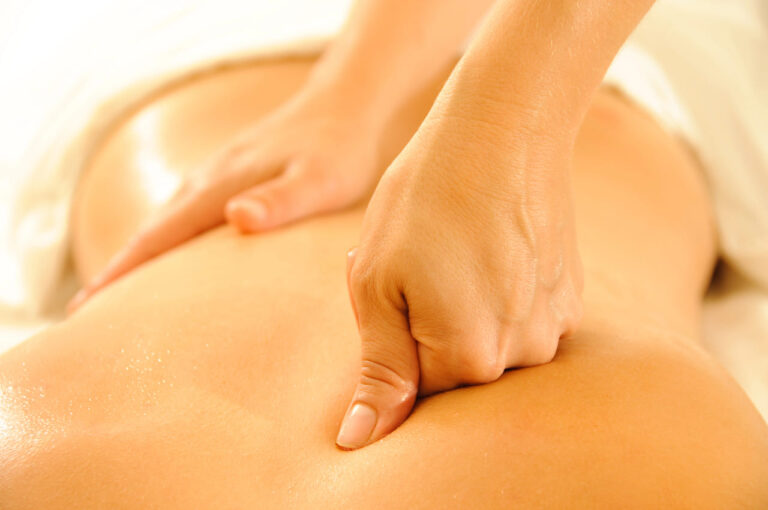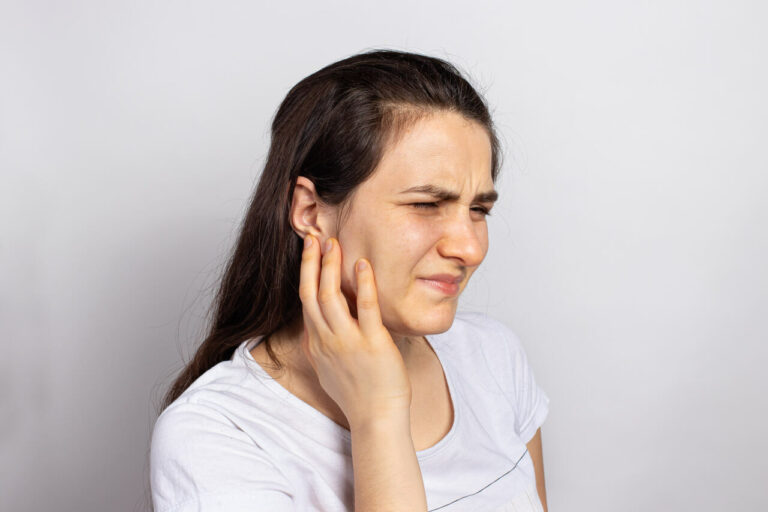Common Conditions Massage Can Help With: From Anxiety to Arthritis
Massage therapy is a versatile and beneficial practice that can aid in the recovery and management of various health conditions. It is widely acknowledged for its ability to alleviate discomfort, improve mobility, and enhance overall well-being. From chronic pain to stress-related issues, massage therapy offers a non-invasive option for addressing numerous health concerns. In this blog, we will explore the range of conditions that massage therapy can assist with, including chronic pain, headaches, arthritis, and more.
What Common Conditions Can Massage Therapy Help With?
Massage therapy can assist with a variety of conditions, such as chronic pain, headaches, and stress-related issues. It works by improving circulation, reducing muscle tension, and promoting relaxation. Common conditions that benefit from massage therapy include back pain, tension headaches, and joint discomfort.
| Chronic Back Pain | Regular massage sessions can reduce muscle tension and improve flexibility, which may help alleviate chronic back pain over time. |
| Fibromyalgia | Massage can help reduce the widespread pain and improve sleep quality for individuals dealing with fibromyalgia, enhancing their overall quality of life. |
| Sports Injuries | Targeted massage can support recovery from sports-related injuries by reducing inflammation and promoting tissue repair. |
| Postural Stress | Individuals with desk jobs or those who maintain poor posture can benefit from massage therapy, which helps relieve stress in muscles and improve posture over time. |
| Digestive Disorders | Through abdominal massage techniques, individuals may experience improved digestion and relief from constipation or bloating. |
| Carpal Tunnel Syndrome | Regular massage can reduce symptoms by relieving pressure on the median nerve and improving hand and wrist function. |
In summary, massage therapy offers a range of benefits for different conditions, enhancing both physical and mental well-being through targeted techniques and approaches.
How Does Massage Therapy Relieve Chronic Pain Conditions?
Massage therapy relieves chronic pain by increasing blood flow, reducing muscle tension, and promoting the release of endorphins, which are natural painkillers. By targeting specific areas of discomfort, massage therapy can improve mobility and reduce pain in conditions like arthritis and fibromyalgia. These benefits are achieved through various techniques that focus on soft tissue manipulation, which can help decrease inflammation and improve circulation.
Incorporating massage therapy into a regular health routine can provide long-term pain relief and improved quality of life. Techniques such as deep tissue massage focus on deeper layers of muscle and connective tissue to address chronic pain patterns. Additionally, trigger point therapy targets specific areas of tension that can cause referred pain in other parts of the body. By releasing these trigger points, individuals may experience significant pain reduction.
Furthermore, massage therapy is known to enhance the recovery process by increasing lymphatic drainage, which helps in reducing swelling and promoting the removal of waste products from the body. This can be particularly beneficial for individuals with chronic pain conditions, as it aids in reducing inflammation and muscle stiffness.
Overall, massage therapy offers a holistic approach to managing chronic pain, providing relief through improved circulation, muscle relaxation, and the promotion of natural pain relief mechanisms in the body.
How Effective Is Massage Therapy for Headaches and Migraines?
Massage therapy is effective for reducing the frequency and intensity of headaches and migraines by targeting muscle tension and improving blood circulation. Techniques focusing on the neck, shoulders, and head can alleviate pain and promote relaxation, making it a beneficial option for those suffering from these conditions.
- Muscle Tension Reduction: Tension in the neck and shoulder muscles can contribute to headaches. Massage therapy helps reduce this tension, potentially decreasing headache frequency.
- Improved Circulation: Enhanced blood flow to the head and neck regions can reduce the severity of headaches and provide relief from associated symptoms.
- Stress Reduction: Stress is a common trigger for headaches and migraines. Massage therapy promotes relaxation and reduces stress levels, helping to prevent headache onset.
- Endorphin Release: The release of endorphins during a massage session can act as a natural painkiller, reducing the intensity of headaches and migraines.
- Sinus Pressure Relief: Techniques that focus on the sinus areas can help relieve pressure and congestion, which are common contributors to headache discomfort.
- Trigger Point Therapy: Identifying and relieving trigger points in the neck and shoulders can reduce referred pain, which often manifests as headaches.
To sum up, massage therapy provides effective relief for headaches and migraines through targeted techniques that reduce muscle tension, improve circulation, and promote relaxation.
How Does Massage Therapy Benefit People With Arthritis or Joint Pain?
Massage therapy benefits individuals with arthritis or joint pain by reducing inflammation, improving mobility, and alleviating discomfort. Techniques like Swedish massage and myofascial release can enhance flexibility and reduce stiffness, providing relief for those affected by these conditions.
- Inflammation Reduction: Massage therapy can help decrease inflammation in the joints, leading to reduced pain and improved joint function.
- Increased Range of Motion: By loosening tight muscles and improving flexibility, massage therapy can enhance the range of motion for individuals with joint pain.
- Pain Relief: Techniques that promote relaxation and improve circulation can lead to significant pain reduction in affected joints.
- Improved Circulation: Enhanced blood flow to the joints aids in delivering oxygen and nutrients, supporting tissue repair and reducing stiffness.
- Stress Reduction: Reducing stress through massage can have a positive impact on arthritis symptoms, as stress can exacerbate pain and inflammation.
- Muscle Relaxation: Relaxation of surrounding muscles can reduce joint pressure and provide relief from chronic pain.
- Lymphatic Drainage: Improved lymphatic drainage can help remove toxins and reduce swelling around joints, providing further relief.
In brief, massage therapy offers multiple benefits for individuals with arthritis or joint pain, enhancing mobility and reducing discomfort through targeted therapeutic techniques.
How Long Does It Take to See Results From Massage Therapy?
The time it takes to see results from massage therapy varies depending on the individual’s condition and the frequency of sessions. Some people may experience immediate relief after a single session, especially for stress-related issues, while others with chronic conditions may require several sessions to notice significant improvements. Regular sessions can provide cumulative benefits, leading to long-term relief and enhanced well-being.
For acute conditions, such as muscle strains or tension headaches, noticeable relief might be achieved after just one or two sessions. However, chronic conditions like fibromyalgia or arthritis may require ongoing sessions to manage symptoms effectively. Each session builds on the previous one, gradually reducing pain, improving mobility, and enhancing relaxation.
Consistency is key when it comes to massage therapy. Those who incorporate regular massages into their health routine often experience more profound and lasting benefits. It’s essential to communicate with your massage therapist about your goals and progress to tailor the sessions to your specific needs.
In summary, the timeframe for experiencing results from massage therapy depends on the condition being treated and the individual’s response to treatment, with regular sessions providing the most significant benefits over time.
Is Massage Therapy Useful for Managing Sciatica and Nerve Pain?
Massage therapy can be useful for managing sciatica and nerve pain by relieving muscle tension, enhancing circulation, and reducing inflammation around the affected nerves. Techniques like deep tissue massage and trigger point therapy can alleviate discomfort and improve mobility for individuals experiencing these conditions.
- Muscle Tension Relief: Alleviating tension in the lower back and gluteal muscles can help reduce pressure on the sciatic nerve, leading to pain relief.
- Improved Circulation: Enhanced blood flow can aid in reducing inflammation around the nerves, providing relief from sciatica symptoms.
- Pain Reduction: By targeting trigger points that contribute to nerve pain, massage therapy can decrease discomfort and improve function.
- Increased Flexibility: Massage therapy can improve the flexibility of muscles surrounding the sciatic nerve, reducing pain and improving mobility.
- Stress Reduction: Lowering stress levels through massage can help minimize pain perception and improve overall comfort.
- Nerve Function Support: Techniques that focus on promoting relaxation can support nerve function and reduce the severity of symptoms.
In brief, massage therapy offers a supportive approach for managing sciatica and nerve pain, providing relief through targeted techniques that reduce muscle tension and improve circulation.
Can Massage Help With Post-Surgical Recovery?
Massage therapy can assist with post-surgical recovery by promoting circulation, reducing scar tissue formation, and alleviating pain. The gentle manipulation of tissues encourages blood flow, supports tissue repair, and can enhance flexibility around the surgical site. Techniques like lymphatic drainage can also help reduce swelling and promote recovery.
Incorporating massage therapy into post-surgical care can significantly enhance recovery outcomes. It is essential to communicate with healthcare providers and massage therapists to ensure that the techniques used are appropriate for the specific surgery and recovery phase. Early intervention with massage therapy can help minimize scar tissue development, which can restrict movement and cause discomfort.
Moreover, regular massage sessions can aid in reducing pain perception by promoting relaxation and endorphin release. This holistic approach not only supports physical recovery but also addresses emotional well-being, which is crucial during the recovery process.
In summary, massage therapy can positively impact post-surgical recovery by enhancing circulation, reducing pain, and supporting tissue repair, leading to improved outcomes and well-being.
Can Massage Therapy Help Reduce Stress-Related Conditions?
Massage therapy can effectively reduce stress-related conditions by promoting relaxation, lowering cortisol levels, and enhancing mood. Techniques that focus on deep relaxation can alleviate symptoms of anxiety, tension, and fatigue, providing a holistic approach to stress management.
| Relaxation Enhancement | Massage therapy encourages a state of deep relaxation, which can significantly reduce stress levels. |
| Improved Sleep Quality | By promoting relaxation and reducing tension, massage therapy can improve sleep patterns, benefiting individuals with stress-induced insomnia. |
| Mood Improvement | The release of endorphins during massage can improve mood and decrease symptoms of anxiety and depression. |
| Lowered Cortisol Levels | Regular massage sessions can decrease cortisol levels, the hormone associated with stress, leading to a calmer state of mind. |
| Tension Relief | Targeting specific muscle groups can alleviate tension, which is often a physical manifestation of stress. |
| Increased Energy Levels | By reducing fatigue and enhancing relaxation, massage therapy can lead to increased energy and vitality. |
Overall, massage therapy offers a comprehensive approach to managing stress-related conditions, enhancing relaxation and overall well-being.
What Types of Conditions Can Massage Therapy Not Help With?
Massage therapy may not be suitable for certain conditions, especially those requiring immediate medical intervention or specific medical treatments. It is not effective for conditions like fractures, severe infections, or acute medical emergencies, where medical attention is crucial.
- Fractures: Massage therapy cannot assist with bone repair and may exacerbate pain or injury if applied to broken bones.
- Severe Infections: Conditions requiring antibiotics or medical intervention, such as severe infections, should not be treated with massage therapy alone.
- Acute Injuries: Injuries that require immediate medical attention, such as deep cuts or severe sprains, are not suitable for massage therapy.
- Cancer: While massage can be beneficial for comfort, it is not a treatment for cancer itself and should be approached with caution.
- Uncontrolled Hypertension: Individuals with uncontrolled high blood pressure should seek medical advice before engaging in massage therapy.
- Severe Skin Conditions: Conditions such as open wounds or severe rashes should not be treated with massage until they have recovered.
Key takeaways: Massage therapy is beneficial for many conditions, but it is not a substitute for medical treatment in cases of severe injuries, infections, or systemic health issues.
Helping You Unwind and Recover
Massage therapy offers numerous benefits for a wide range of conditions, enhancing both physical and emotional well-being. By understanding the specific conditions that can benefit from massage, individuals can make informed decisions about incorporating this practice into their health routine.
For those seeking personalized support, Propel Sports Physical Therapy in Edmonton South provides professional guidance and tailored massage therapy sessions to meet each client’s unique needs. Contact us today to explore how we can support your journey toward better health.
Frequently Asked Questions
Can Massage Therapy Be Used Alongside Other Treatments?
Yes, massage therapy can complement other treatments such as physiotherapy or chiropractic care. It is often used in conjunction with these therapies to enhance recovery and improve overall outcomes.
How Often Should I Receive Massage Therapy for Best Results?
The frequency of massage therapy sessions depends on individual needs and conditions. Some may benefit from weekly sessions, while others might find monthly visits sufficient for maintenance and relief.
Are There Any Risks Associated With Massage Therapy?
While generally safe, massage therapy may not be suitable for everyone. Individuals with certain medical conditions, such as blood clots or severe skin issues, should consult with healthcare providers before receiving massage therapy.
What Should I Expect During My First Massage Therapy Session?
During your first session, the therapist will assess your needs and tailor the massage to your condition. Expect a relaxing environment where you can communicate your comfort levels and preferences.
Can Massage Therapy Improve Athletic Performance?
Yes, massage therapy can enhance athletic performance by improving flexibility, reducing muscle tension, and accelerating recovery from intense physical activity.








